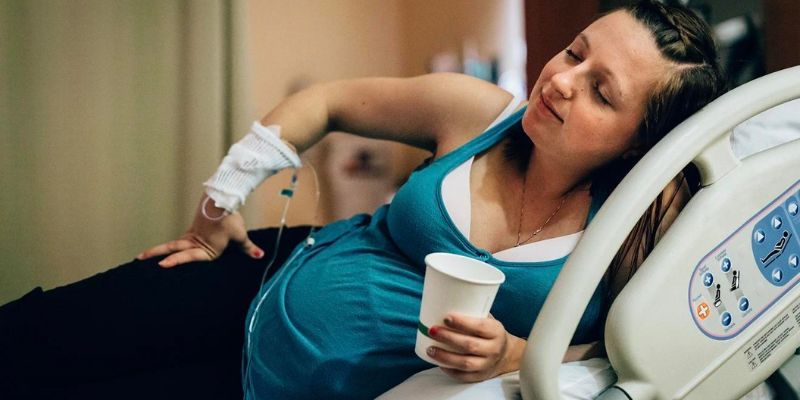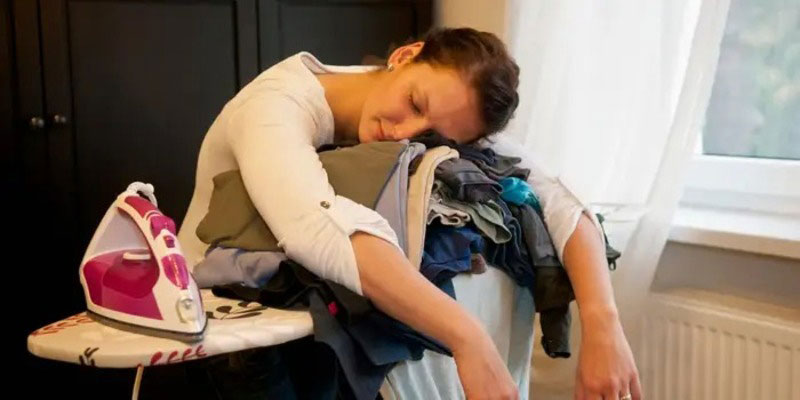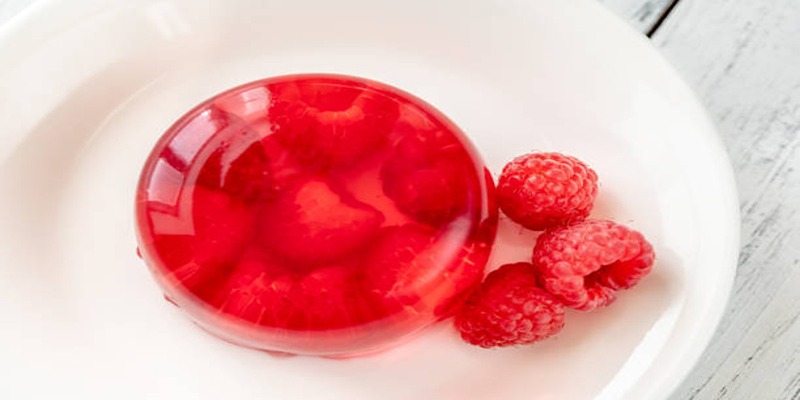What is Back Labor
Jan 04, 2024 By Madison Evans
Having an infant is a magical and exciting experience. But during labor, it can be a challenging journey, filled with various sensations and emotions.
Back labor occurs when the baby's head puts extra pressure on the mother's back muscles and spine, causing intense lower back pain for the mother-to-be.
Suppose you think you might be experiencing back labor during your pregnancy. In that case, it's important to understand what this means to prepare for delivery day and process any questions or concerns beforehand.
This blog post will provide insight into what back labor entails and tips on managing this phenomenon if encountered along your pregnancy journey.
What is back labor?

Back labor is a labor pain when the baby's head puts extra pressure on the mother's back muscles and spine. This can cause intense lower back pain for the mother-to-be during delivery.
Back labor usually begins in the late stages of pregnancy as your baby moves further into the birth canal, making it difficult to distinguish from normal labor pains.
It can last for the entire duration of labor, or it could come and go intermittently.
It's common to experience back pain in late pregnancy due to the extra weight you carry and your body's natural preparation for delivery. However, persistent lower back pain accompanied by intense contractions indicates that you may be experiencing back labor.
Other signs of back labor include a tightness in your lower back that intensifies with each contraction and an inability to find relief in any position.
What does back labor feel like?

Back labor pain usually feels like a deep, intense ache in your lower back that can be incredibly uncomfortable. It is important to note that the pain may not be restricted solely to your lower back.
Depending on the baby's position in the womb, you may also feel sharp pains radiating down your hips and the backs of your legs.
You will likely find long-term relief from back labor pain by changing positions, but you may not find any relief from short-term pain.
In addition to the physical pain associated with back labor, some women feel a strong emotional component, including fatigue, anxiety, and hopelessness.
What Causes Back Labor?
Back labor usually occurs when your baby is in a posterior position (the 'sunny-side up' position). This means the baby's head presses against your lower back rather than toward your cervix.
A posterior position can make labor more difficult and painful, preventing the baby from comfortably exiting the birth canal.
Other causes of back labor could include a history of pelvic or spine issues, carrying twins or multiples, an abnormally large fetus, or a narrow pelvis.
If you have any concerns about the possibility of back labor, it's best to speak to your doctor or midwife before delivery.
Symptoms of Back Labor During Pregnancy
- Signs of Back Labor in Early Pregnancy
Early signs that you may be experiencing back labor during pregnancy include an increased frequency of Braxton Hicks contractions and a persistent lower backache.
You may also notice hip or abdominal pain and difficulty finding relief no matter your position.
- Symptoms of Back Labor During Delivery
If you are in active labor and suspect that you may be experiencing back labor, there are several symptoms that you can look out for.
These include an intense tightening sensation in your lower back during contractions, frequent low back pain, and sharp pains radiating down your hips and legs.
You may also find it difficult to find relief from the pain, even when changing positions.
How to Cope with Back Labor?
Back labor can be an incredibly painful experience during delivery. To help manage and cope with the pain, it's important to be proactive in finding relief methods that work for you. Here are some tips on how to cope with back labor:
- Change Positions
Changing positions frequently during labor can reduce the intensity of back labor pain. This could include standing, kneeling, or leaning on a birth ball.
- Take a Warm Bath
A warm bath can help relax your muscles and relieve back labor pain temporarily.
- Use Heat Pads
Applying heat pads or ice packs to your lower back during contractions may help reduce the pain's intensity.
- Use Relaxation Techniques
Practicing relaxation techniques such as deep breathing, visualization, and meditation can help to ease back labor pain.
- Seek Professional Help
If you find it difficult to cope with back labor pain, don't hesitate to ask for medical assistance or seek advice from your doctor or midwife.
Exercises to Help Ease Back Labor Pain
Certain exercises can be done before and during pregnancy to help ease back labor pain.
- Pelvic Tilts
Pelvic tilts are a great way to increase the flexibility of your pelvic muscles and help relieve lower back pain.
- Kegels
Kegel exercises are an excellent way to strengthen the pelvic muscles and reduce tension in the lower back.
- Cat-Cow Pose
This gentle yoga pose can help relax the muscles in your lower back and reduce pain.
- Abdominal Strengthening Exercises
Strengthening exercises such as planks and side planks can help to strengthen the abdominal muscles and alleviate pelvic pressure.
When to Contact Your Healthcare Provider
It's important to contact your healthcare provider if you are experiencing back labor.
Your doctor or midwife can provide more information and advice on managing the pain. If you find it difficult to cope with the pain of back labor, don't hesitate to ask for medical assistance.
Tips for Incorporating Self-Care Strategies For Relief From Back Labor
Incorporating self-care strategies into your daily routine is important to make labor as comfortable and manageable as possible. Here are some tips that you can keep in mind:
- Rest: Get plenty of rest during pregnancy and take regular daily breaks. This will help to reduce fatigue and provide relief from back labor pain.
- Eat Healthy: Eating a balanced diet with plenty of fruits and vegetables will give your body the nutrients it needs for a healthy pregnancy.
- Exercise: Incorporating mild exercise into your daily routine can help to build strength, reduce stress and ease back labor pain.
- Massage: A massage from a qualified therapist can help relax tense muscles and relieve pain.
- Stay Hydrated: Drinking plenty of fluids will help to keep your body hydrated and reduce the intensity of labor pains.
FAQs
Is back labor painful?
Yes, back labor is often very painful. The pain can range from a dull ache to more severe cramping or sharp pains. It is usually felt in the lower back and sometimes radiates around the hips and down to the upper thighs.
Does back labor start first?
Back labor usually begins in the later stages of labor, after contractions have started. It can be present throughout labor or come and go. It is often more intense during each contraction.
Is childbirth the worst pain?
This is a difficult question to answer because all women experience childbirth differently. Some mothers find that the pain of back labor is more intense than other labor stages, but it depends on the individual.
Conclusion
The road to labor can be long and arduous, especially if you're experiencing back labor. It is important to understand what back labor is and the unique symptoms it presents. Knowing this information can help you better prepare for delivery day, allowing you to alleviate pain during your pregnancy journey as much as possible.
If you are pregnant and have any questions or concerns about your birth experience, it is always best to speak with your doctor or midwife. They can provide the best advice and guidance for a safe and healthy delivery. Good luck on your journey!
-
 Condition Feb 20, 2024
Condition Feb 20, 2024Narcolepsy: Genetic? Sleep Experts on Inheriting Chronic Disorder
Is narcolepsy a condition that runs in your family? After seeing someone else's sudden onset of drowsiness, have you ever questioned whether or not you may be at risk for developing sleep paralysis yourself? The question of whether or not narcolepsy is a genetic condition or the consequence of environmental circumstances is still being investigated by scientists
-
 Food Nov 08, 2023
Food Nov 08, 2023Unveiling the Health Wonders of Gelatin: A Comprehensive Guide
Uncover the numerous health benefits of gelatin, discover natural sources, and explore delicious ways to incorporate it into your diet with our comprehensive guide.
-
 Condition Oct 07, 2023
Condition Oct 07, 2023Exploring Treatment Options for Vitiligo
Learn about effective treatments for vitiligo, a skin condition that causes pigmentation loss. Explore how to restore color.
-
 Food Nov 20, 2023
Food Nov 20, 2023Know About Echinacea Benefits, Uses, Dosage, Side Effects and More
Echinacea are rich in antioxidants, commonly found in the USA and Canada, and are popular for their anti-inflammatory properties
